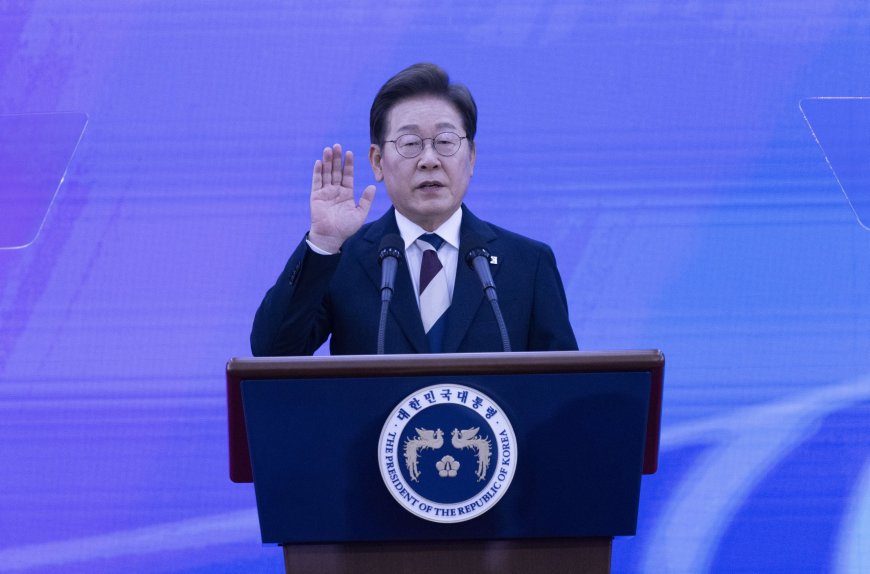South Korea’s President Lee in Tokyo: A New Chapter in Seoul–Tokyo Relations
South Korean President Lee Jae Myung’s Tokyo summit with Japanese PM Shigeru Ishiba marks a historic reset, focusing on trade, security, and cultural cooperation.

In a landmark diplomatic move, South Korean President Lee Jae Myung arrived in Tokyo this week for his first full-scale summit with Japanese Prime Minister Shigeru Ishiba. The visit marks a crucial step in reshaping the complex, and often strained, relationship between the two nations. Both leaders are aiming to turn the page on decades of mistrust, focusing instead on economic partnerships, regional security, and a renewed cultural exchange.
The summit has drawn global attention because it signals not only a warming of Seoul–Tokyo relations but also a broader shift in East Asia’s diplomatic dynamics at a time when the United States, China, and North Korea remain central players in the region’s stability.
A Meeting Years in the Making
President Lee’s trip is the first high-profile South Korean presidential visit to Japan in nearly a decade, underscoring the historic nature of the moment. Relations between the two countries have long been marred by disputes over wartime history, territorial disagreements, and trade conflicts.
Observers recall that as recently as 2019, Tokyo’s decision to impose export restrictions on South Korea’s semiconductor materials triggered a major diplomatic row. Today, however, both governments are presenting a more pragmatic vision, prioritizing mutual interests such as supply chain security, energy cooperation, and military coordination.
As reported by The Manila Times, President Lee emphasized that “true friendship requires both acknowledgment of the past and a willingness to build a new future.”
Economic Cooperation at the Forefront
Economics featured heavily in the summit. South Korea and Japan are two of Asia’s largest economies, yet their cooperation has often been overshadowed by diplomatic friction. Both leaders pledged to:
-
Reinforce trade partnerships in advanced technology sectors such as semiconductors, AI, and green energy.
-
Establish a joint research council to support hydrogen energy development.
-
Work toward a more unified supply chain strategy to reduce dependence on China in critical industries.
Analysts point out that such agreements are not only symbolic but necessary, given the intensifying global competition in emerging technologies. A new era of Korea–Japan economic integration could also strengthen their joint position in global markets.
For a broader look at how shifting energy and trade policies are shaping Europe and Asia, see AInvest’s energy strategy report.
Security in the Shadow of North Korea
Security issues dominated the second half of the talks. With North Korea continuing missile tests and expanding its nuclear arsenal, Seoul and Tokyo agreed to deepen defense ties. The two countries plan to:
-
Share more real-time intelligence on North Korean launches.
-
Conduct joint naval drills with the United States in the Sea of Japan.
-
Explore joint funding for missile defense systems.
Prime Minister Ishiba highlighted that “a strong alliance between Seoul and Tokyo is essential not just for our nations but for the peace of Northeast Asia.”
This strategic pivot comes at a critical juncture. Washington has been urging its allies to bolster cooperation, while Beijing continues to expand its influence in the region. By aligning more closely, South Korea and Japan are signaling a willingness to take greater responsibility for their own security.
Historical Issues: The Unspoken Elephant in the Room
While the summit highlighted progress, historical disputes remain unresolved. Contentious issues such as compensation for wartime forced laborers and the legacy of colonial rule were not the main focus of this meeting, but both leaders acknowledged the weight of the past.
President Lee cautiously noted that “building trust does not mean forgetting history, but it does mean moving forward with sincerity.” For Japan, the challenge lies in balancing domestic political pressures with international expectations for reconciliation.
Though the summit did not produce immediate breakthroughs on these sensitive matters, the shift in tone is already being seen as a victory for diplomacy.
Public Reactions in Seoul and Tokyo
The visit has sparked significant public debate in both countries. In South Korea, younger generations appear more supportive of cooperation with Japan, seeing economic and technological benefits as outweighing historical grievances.
In Japan, the summit is being interpreted as a diplomatic win for Prime Minister Ishiba, who has been working to restore Japan’s regional influence. Editorials in major Japanese newspapers praised the leaders’ efforts, though some commentators cautioned that domestic skepticism remains strong.
The U.S. Factor
The United States quietly welcomed the summit. Washington has long sought greater cooperation between Seoul and Tokyo as part of its Indo-Pacific strategy. The timing is particularly significant as President Donald Trump’s administration continues to pressure allies for increased defense spending and stronger military coordination.
By showing unity, South Korea and Japan are not only strengthening their bilateral ties but also reassuring the United States of their commitment to regional stability.
A Cultural Dimension
Beyond economics and security, the two leaders discussed fostering cultural and educational exchanges. Initiatives include:
-
Expanding student exchange programs between universities.
-
Joint cultural festivals showcasing K-pop, J-pop, and shared traditions.
-
Promoting tourism cooperation, with both governments pledging to ease travel restrictions.
These soft-power measures are intended to strengthen people-to-people connections, helping future generations see each other as partners rather than adversaries.
Looking Ahead: A Fragile but Promising Path
The Tokyo summit between President Lee and Prime Minister Ishiba is best described as a reset in relations. While deep-rooted issues remain, the willingness to move forward marks an important milestone.
Whether this cooperation can be sustained will depend on consistent follow-through, careful diplomacy, and the ability of both governments to manage domestic criticism. Yet the symbolism of this visit should not be underestimated—it reflects a recognition that the future of East Asia requires collaboration, not conflict.











